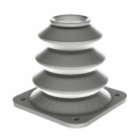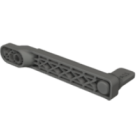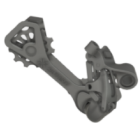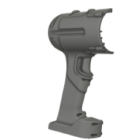3D printing in civil engineering
Civil engineering — traditionally associated with concrete, steel, and labor-intensive processes — is undergoing a quiet but powerful transformation thanks to additive manufacturing. While early interest in 3D printing focused primarily on mechanical design and prototyping, civil engineering has embraced the technology for entirely different reasons: speed, precision, material efficiency, and design freedom. From bridges to bespoke façades, the application of 3D printing in civil engineering opens up new architectural and structural possibilities.
Construction-scale 3D printing: the foundation
The most visible intersection of 3D printing and civil engineering is in large-format construction printing. Using gantry- or robotic-arm-based systems, these printers extrude cementitious or geopolymer materials to form walls and structural elements layer by layer. This method dramatically reduces formwork, material waste, and manual labor — key cost drivers in traditional building methods.
Entire houses, schools, and even bridges have been built using construction 3D printing in various parts of the world. These projects demonstrate not only the technical feasibility but also the speed and repeatability of the method, with some buildings completed in just 24–48 hours of machine time.
Applications that go beyond walls
Additive manufacturing in civil engineering is not limited to entire structures. It plays a growing role in:
- customized architectural components, such as ornamentation or complex lattice panels,
- prefabricated modules, printed off-site and assembled rapidly with minimal labor,
- formworks for concrete casting, particularly for freeform or organic geometries that are expensive or impossible to achieve conventionally,
- infrastructure repair, where 3D printing can produce molds or components for bridge retrofitting or restoration of historical details.
These applications align perfectly with the demands of urban densification, sustainability, and digital construction workflows.
Design freedom meets structural integrity
One of the most compelling advantages of 3D printing in civil engineering is its ability to merge form and function. Parametric design, often coupled with generative algorithms, allows engineers to create optimized geometries that minimize material use without compromising performance. This is particularly valuable in the design of lightweight façades, complex columns, or integrated utility systems.
The printed structures can also embed smart features such as cooling channels, cable guides, or even sensors directly within the layers — a level of integration that traditional formwork can’t support.
Sustainability and efficiency
Environmental performance is a driving concern in civil engineering. 3D printing reduces construction waste by up to 60%, minimizes the use of concrete (a high CO₂ emitter), and allows for local material use, including clay, recycled aggregates, or earth-based mixes. On top of that, the reduction in transportation and labor contributes to a more sustainable construction process.
Emerging techniques in Binder jetting and robotic extrusion of geopolymers further support the push for net-zero building practices, aligning with green certification standards and circular economy principles.Environmental performance is a driving concern in civil engineering. 3D printing reduces construction waste by up to 60%, minimizes the use of concrete (a high CO₂ emitter), and allows for local material use, including clay, recycled aggregates, or earth-based mixes. On top of that, the reduction in transportation and labor contributes to a more sustainable construction process.
Emerging techniques in Binder jetting and robotic extrusion of geopolymers further support the push for net-zero building practices, aligning with green certification standards and circular economy principles.
Challenges and regulatory outlook
Despite its promise, additive manufacturing in civil engineering still faces challenges. Standards for load-bearing printed components are still evolving. Regulatory bodies are working to develop safety and quality benchmarks, particularly in public infrastructure. There’s also a need for interdisciplinary knowledge — blending structural engineering, materials science, and digital manufacturing — which takes time to integrate into the industry at scale.
That said, governments and large contractors are already piloting 3D printing at scale, and many universities are investing in research centers focused on concrete printing and digital construction methods.
Summary
The application of 3D printing in civil engineering is no longer experimental — it’s practical, proven, and scaling fast. Whether used for rapid housing, landmark architecture, or infrastructural components, additive manufacturing brings unprecedented agility and innovation to an industry often characterized by slow adoption cycles. As materials improve, regulations catch up, and designers become more digitally fluent, 3D printing will become a core tool in the civil engineer’s toolbox — not just for prototyping, but for building the cities of the future.
Explore also
- 3D printed prototype
- 3D printing in medical industry
- 3D printing for dental applications
- Application of 3D printing in industry
- Application of 3D printing in architecture
- 3D automotive: additive manufacturing in car production
- Aerospace additive manufacturing
- 3D printing in education
Related categories













